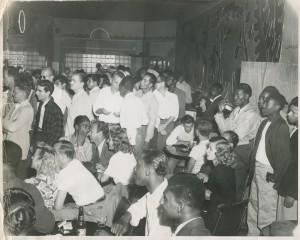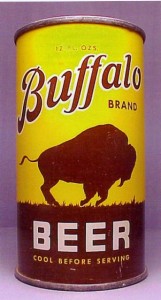
By William Burg
Photos courtesy of Keith Burns
In the 1940s, Sacramento’s West End was filled with the sounds of jazz. Based around M Street (renamed Capitol Avenue by 1940), the neighborhood was radically changed by the start of World War II, the forced relocation of Sacramento’s thousands of Japanese Americans to internment camps, and a migration of African Americans to Sacramento. Many of these migrants came from the Southern states for jobs in Sacramento’s railroad shops and canneries, or at nearby airfields and Army bases. Some purchased businesses from the departing Japanese, opening a variety of businesses, but the best known were the jazz clubs. These clubs became so popular they crossed racial barriers and made Sacramento a stop on the touring circuit for the greatest jazz musicians of the 20th century.
Read more »
When Sacramento Valley’s early inhabitants found their way to John Sutter’s outpost, brewing was hardly a new concept. As in Europe, the American colonies boasted breweries aplenty and the fine art of home brewing was just another household ritual alongside washing the linens, cooking and tending the garden. Understandably, as dreams of gold and agrarian utopias lured the masses westward, beer naturally came along for the ride. Read more »
By William Burg Photos by Scott Duncan B&W photo-Author’s collection.
The Maydestone Apartments building on 15th Street provides views in all directions, with the skyscrapers of Downtown to the west and the rooftops of Midtown to the east. Built in 1912, the 32 unit Mission Revival building was closed after a mysterious fire on Halloween 2003. After seven years, the building is about to come back to life. Read more »
By William Burg Photo from Author’s collection
On August 21, 2010, Sacramento’s Western Pacific passenger depot at 1910 J Street marks 100 years since the arrival of its first passenger train. On that day a century ago, the Western Pacific Railroad began passenger operations in Sacramento Read more »
By William Burg
In the era following the Civil War, Sacramento and other cities celebrated July 4th with considerable reverence. After the long struggle, patriotism helped heal a wounded nation. In Sacramento, the Independence Day parade brought every local organization of note together, ending with a series of patriotic speeches, poems and reading of the Declaration of Independence at the Grand Pavilion. In the shadow of this solemnity, a band of ill-tempered and intemperate Sacramentans held their own parade, meant to poke the pompous and temper the seriousness of the occasion with acts of public lunacy. They were called the Horribles. Read more »



